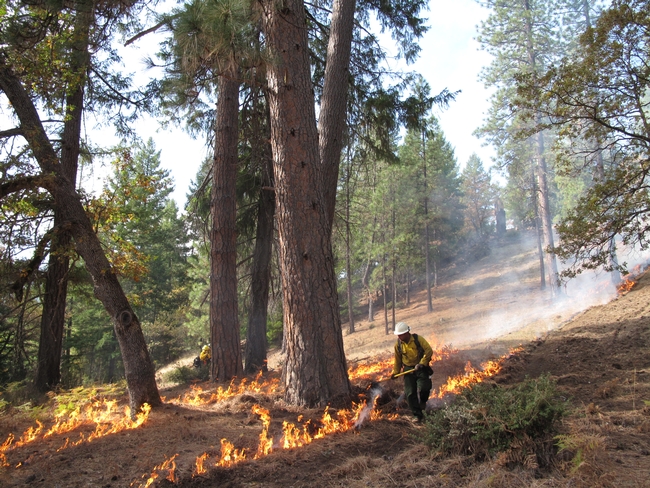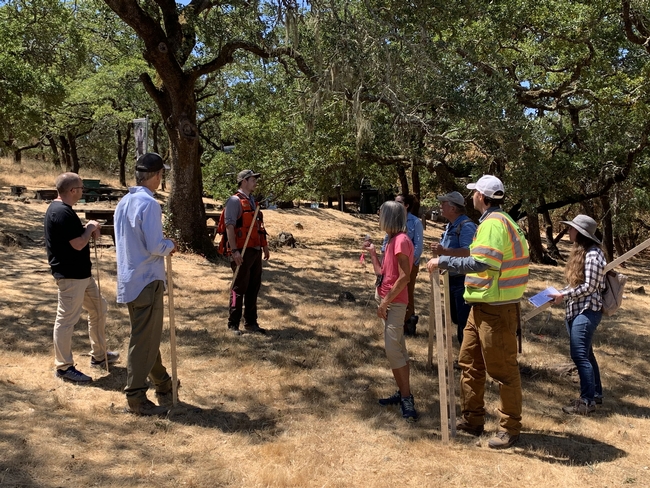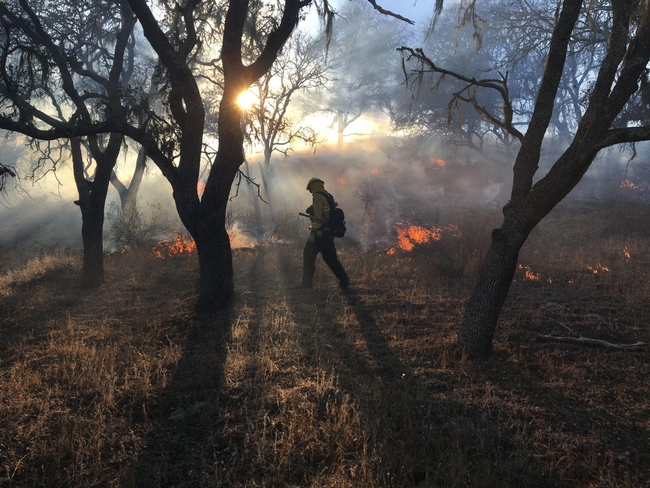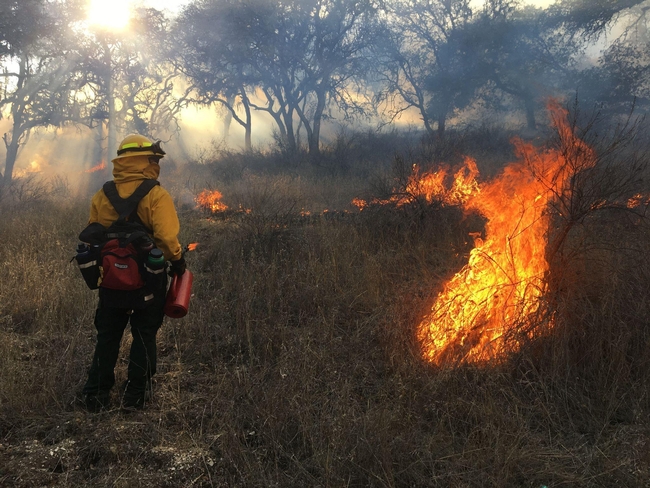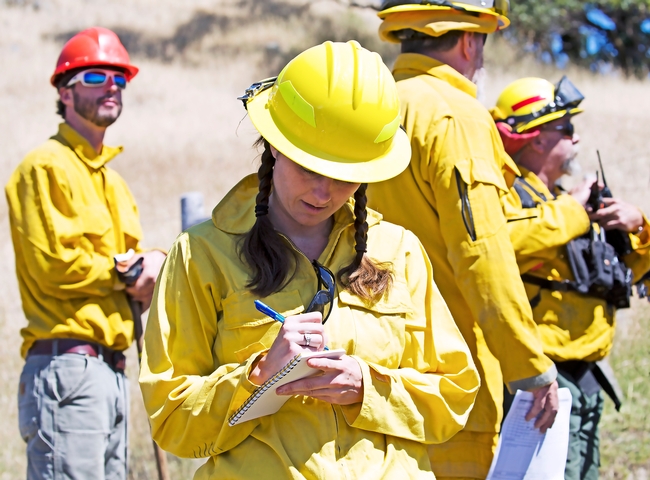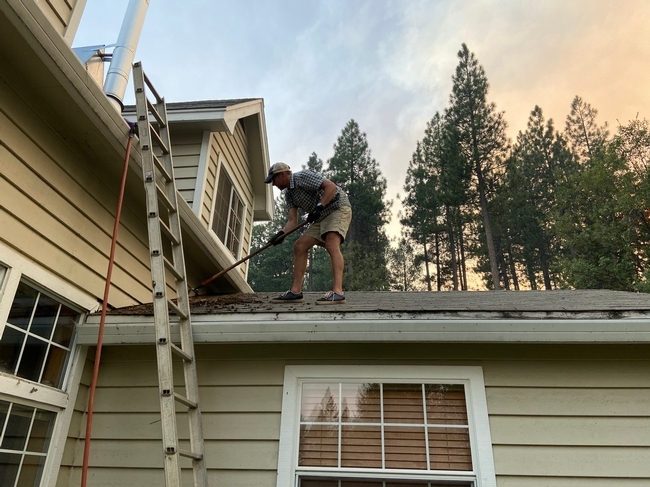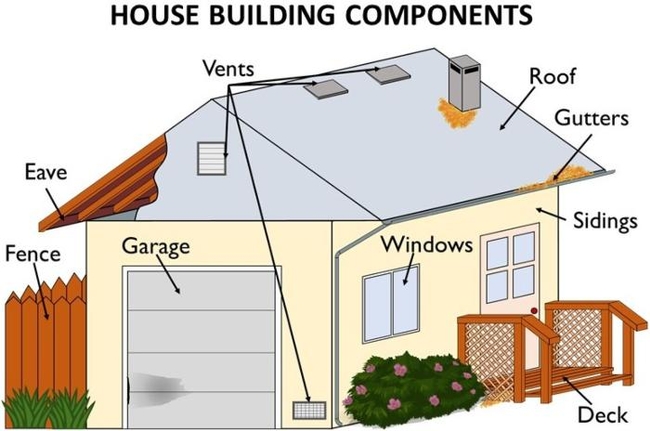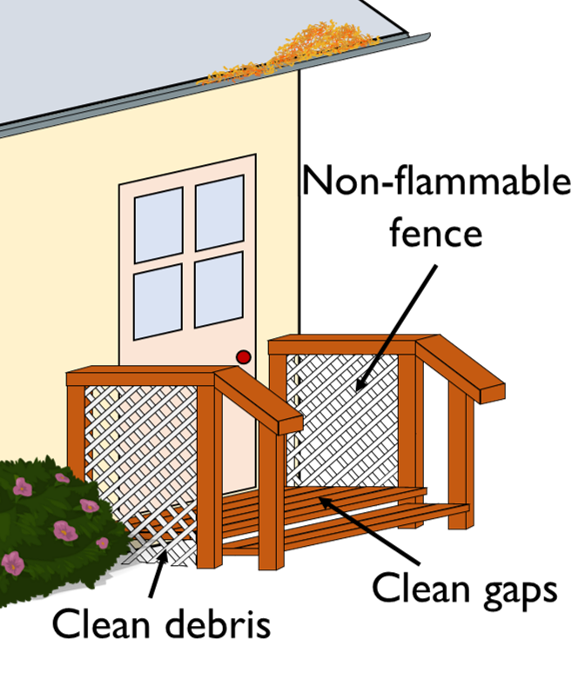Posts Tagged: fire
Prescribed fire, cultural burning get liability support to reduce wildfire risks in California
First-of-its-kind fund to offset losses if prescribed or cultural burn damages property
The State of California rolled out a first-of-its-kind approach to curbing the state's catastrophic wildfire problem on June 19 by providing new protections for prescribed fire and cultural burning practitioners. The $20 million allocated for the “Prescribed Fire Liability Claims Fund Pilot” will cover losses in the rare instance that a prescribed or cultural burn escapes control.
California Senator Bill Dodd authored the 2022 bill (Senate Bill 926) that made this fund possible, continuing his many years of leadership on wildfire and prescribed fire-related legislation.
“Prescribed fire is a cost-effective way to minimize the scope and severity of wildfires,” said Sen. Bill Dodd, D-Napa. “It's a tool that has been used for millennia by Native American tribes and one that will continue to play a big role in wildfire prevention. The rollout of this fund is a big step toward keeping California communities safe.”
The use of prescribed fire and cultural burning — sometimes collectively called “good” or “beneficial” fire — is a key component of wildfire risk management in California. These projects reduce hazardous fuels, help restore ecological and cultural values, and make our communities safer and our ecosystems more resilient to wildfire. However, lack of liability insurance for practitioners has been a major barrier to increasing the use of prescribed fire, even as firefighters, fire scientists, at-risk communities and state, federal and tribal leaders call for more.
The Prescribed Fire Claims Fund pilot project removes a significant barrier to obtaining insurance for potential damages from a prescribed fire or cultural burn conducted by a certified prescribed fire burn boss or a cultural fire practitioner,” said CAL FIRE Director/Chief Joe Tyler. “As we continue to focus on increasing the resiliency of the state's forests, creating a pathway for private burn bosses to have the significant protection this claims fund provides is a critical step toward reaching the goals of the Governor's Wildfire and Forest Resilience Action Plan.”
The fund will provide up to $2 million in coverage for prescribed fire projects led by a qualified burn boss or cultural practitioner. The fund is meant to demonstrate that prescribed fire, when carefully planned, resources and implemented, is a low-risk land management tool that mitigates the larger, more damaging risks of high-severity wildfires. The fund is the first of its kind nationally and is the result of several years of collaboration by a diversity of partners working with Senator Dodd's Office, including The Nature Conservancy, CAL FIRE, the University of California Cooperative Extension, the California Department of Insurance, tribal representatives and many others.
“Launching this program is a key step in scaling ecologically based forest management to reduce the risk of megafires. We appreciate Senator Dodd's leadership and the expedient work of CAL FIRE and beneficial fire practitioners to develop this fund as the next fire season quickly approaches,” said Dan Porter, The Nature Conservancy's Forest Program director.
The fund will also advance cultural burning, helping Indigenous Californians restore their connection to fire.
“Cultural burning is an essential practice to meet diverse objectives, including biodiversity stewardship, ecological health and community safety. The availability of this pilot fund provides cultural fire practitioners a safeguard against financial risk in the unlikely event of an escaped burn. This is a significant incentive to support revitalization of burning traditions following the legacy of policies banning such practices,” said Don Hankins, professor of geography and planning at CSU Chico and co-founder of the Indigenous Stewardship Network.
This fund is part of a larger vision for restoring beneficial fire across California's fire-adapted ecosystems. Last year, the state released its Strategic Plan for Expanding the Use of Beneficial Fire, which identified this claims fund as a priority. The state has also rolled out a state-certified burn boss program, changed the liability standard for prescribed fire, and made investments in prescribed burn associations, agency staffing, and other related efforts.
“We are using every tool to protect Californians, including using prescribed fire to fight wildfires,” said Insurance Commissioner Ricardo Lara. “The Prescribed Fire Claims fund will be critical to assisting our tribal groups, nonprofits and private landowners who are leading the way. This is an example of government being innovative and leading by example. The data that we get from the claims fund is going to be essential to our on-going education with insurance companies to support insuring this important work.”
Lenya Quinn-Davidson, Fire Network director for the University of California Agriculture and Natural Resources, says the recent momentum is unparalleled.
“Californians are desperate to have a better relationship with fire, and only with innovative approaches like this claims fund will we be able to unleash the good work that needs to happen,” said Quinn-Davidson. “It's a challenging time to be working on fire in California, but also an incredibly inspiring time.”
More information about the Pilot Prescribed Fire Claims Fund can be found on the CAL FIRE Website at https://www.fire.ca.gov/what-we-do/natural-resource-management/prescribed-fire, including frequently asked questions and an enrollment form for practitioners.
Workshops for forest landowners come to Solano, Sacramento counties, beginning July 18
Free forester site visit for landowners who complete workshop series
Forest landowners in Solano and Sacramento counties are encouraged to learn about their forests and connect with natural resource professionals in their areas during the next Forest Stewardship Workshop Series from University of California Cooperative Extension, July 18 to Sept. 12. These programs can be essential for small landowners who seek to make their forests resilient against wildfire.
Upon completing the nine-week series of virtual and in-person sessions, landowners also will be eligible for a free site visit from a local Registered Professional Forester (RPF), Certified Range Manager or California Certified Burn Boss.
Content is applicable to all forest landowners regardless of where their forest is located and will highlight talks from the local Resource Conservation District, UCCE forestry advisors, CAL FIRE, Natural Resources Conservation Service, and other natural resources community leaders. Registration fee is $60 for the workshop series, which will address common concerns among California landowners, including but not limited to:
- Forest ecology and vegetation management
- Financial planning and cost-sharing opportunities
- Oak woodland management and targeted grazing
Past participants have rated the workshop series highly, with 98% of 2022 participants rating the series overall as excellent or very good. In addition, 94% of past participants reported greater awareness of applying for and using cost-sharing programs.
A past participant has described the workshops as very accessible, saying “they (UCCE) broke things down into small pieces, [and] staff were always an email away.” In seeking to make an otherwise large amount of content approachable, UCCE hopes that landowners come away with a holistic understanding of the management process.
The workshop will take place in a hybrid setting, with classes taking place weekly online over Zoom. Participants will also engage in practical learning through a field day, where they can meet other cohort members and UCCE professionals at an outdoor field location.
At the conclusion of the workshop series, landowners will be equipped with the knowledge and network that will empower them to manage their forests in ways that meet their specific goals and objectives.
Community members in Sacramento and Solano counties interested in forest management, forest and fire ecology, and related topics are encouraged to register: https://surveys.ucanr.edu/survey.cfm?surveynumber=28675.
Forest landowners across California can learn about upcoming workshops in their areas, and also find additional resources, publications and videos: https://ucanr.edu/sites/forestry/Stewardship/.
Public invited to observe prescribed fire training June 4-9
The Monterey Bay area will host part of the first California Central Coast Prescribed Fire Training Exchange, or Cal-TREX.
Fire practitioners from across the state, greater North America and international locations (Spain, Honduras, Costa Rica, Ecuador) are gathering for a Prescribed Fire Training Exchange on June 3-10.
The training is hosted by the Central Coast Prescribed Burn Association, which empowers the public to build a culture of “good fire” and helps private landowners conduct prescribed burns in Monterey, San Benito and Santa Cruz counties.
Prescribed burns will be open for the public to observe on various days throughout the training, most likely June 4-9, depending on the weather. Please see the CCPBA webpage for updates on upcoming burns: http://calpba.org/centralcoastpba.
Prescribed Fire Training Exchanges (TREX) first came to Northern California in 2013, and have made a dynamic, positive cultural shift concerning prescribed fire, within both regional fire services and the general public. These “good fire” TREX events have drawn significant attention, especially in the context of more severe wildfire seasons.
After months of cross-organizational cooperative planning, participants in the weeklong training will be burning a mix of grassland, oak woodland and shrub vegetation types, and make a lasting, positive change concerning “good fire” on the Central Coast.
The TREX will provide experiential training opportunities to advance regional prescribed fire capacity, while also enhancing research to better understand the ecological response of wild plant and animal species following fire.
At this TREX event, participants will learn how to safely conduct prescribed burns in various vegetation types across three counties. Along with multiple prescribed burns, the weeklong program will include lectures and seminars on local fire ecology of plant and animal species, tribal burning practices and burn planning led by multiple burn bosses and other experts.
Burn locations may include the Nyland property (owned by Trust for Public Land and San Benito Agricultural Land Trust) near San Juan Bautista, the Santa Lucia Conservancy near Carmel Valley and the Kechun Village (owned by the Nason family) in Arroyo Seco.
Be advised, while the CCTREX works closely with the Monterey Bay Air Resources District (MBARD) to assure good smoke dispersal, smoke may be seen and present in these areas during and after a burn. Please see the CCPBA webpage for updates on upcoming burns: http://calpba.org/centralcoastpba.
BurnBot, a new technology featuring a mobile burn chamber, remote-controlled mastication and fire drone systems, will be used for the prescribed burn on June 4. To observe the Nyland burn on June 4, register at https://bit.ly/CCPBApublicRxfire. Details including time and directions will be emailed to registered participants.
Participants and partners include members of the Amah Mutsun Tribal Band and the Esselen Tribe of Monterey County, University of California Agriculture and Natural Resources, Resource Conservation District of Monterey County, CAL FIRE, local land trusts, scientists, ranchers, students, researchers, land managers and others. The CCPBA is funded by two CAL FIRE wildfire prevention grants.
For more information, contact Jamie Tuitele-Lewis, fire fuel mitigation program and forest health coordinator, at jtlewis@rcdmonterey.org or Barb Satink Wolfson, UC Cooperative Extension area fire advisor, at bsatinkwolfson@ucanr.edu.
UCCE seeks statewide input to develop future wildfire programs
University of California Cooperative Extension has recently expanded their team of fire advisors and staff. This new group of UCCE fire professionals is interested in learning about the concerns of the communities that UCCE serves, as well as the natural resource professionals already working to address these issues.
Results from this survey will enhance the team's ability to partner with residents, landowners, agencies, academics, and other organizations to reduce California's vulnerability to wildfires. These new advisors will also share survey results with UCCE colleagues throughout the state, who already provide important fire-related programming across diverse landscapes and audiences.
"Wildfires will continue to affect all Californians, either directly or indirectly," said Katie Low, UCCE statewide fire coordinator. "It's invaluable to have the input of as many people as possible to guide the development of our wildfire-related extension programs, so that they can provide the most useful resources and information to communities across California."
The survey asks questions about topics such as:
- Gaps within existing educational programming and resources
- Challenges community members are facing in addressing wildfire risk
- Empowerment of communities to make property management decisions and prepare for wildfire
- Acceptability of prescribed fire and other fuels treatments
By participating in this study, you can choose to enter a drawing to win one of fifty $20 VISA gift cards.
To take the online survey, please visit https://bit.ly/UCCE_Fire_Survey.
This research is being led by a team of new UCCE fire advisors and staff. If you have any questions about this survey, please contact the fire/forestry professionals involved in this survey effort:
- Luca Carmignani, UCCE fire advisor for Los Angeles, Orange, Riverside, and San Diego counties, carmignani@ucanr.edu
- Alison Deak, UCCE fire advisor for Fresno, Madera, and Mariposa counties, aldeak@ucanr.edu
- Katie Low, UCCE fire academic coordinator for Nevada and Placer counties, katlow@ucanr.edu
- Barb Satink Wolfson, UCCE fire advisor for Monterey, San Benito, Santa Clara, and Santa Cruz counties, bsatinkwolfson@ucanr.edu
- Ryan Tompkins, UCCE forestry advisor for Plumas, Sierra, and Lassen counties, retompkins@ucanr.edu
For more information about wildfire-related programming from University of California Cooperative Extension, please visit https://ucanr.edu/sites/fire/ or the Facebook page https://bit.ly/fireSolutions.
Five things you can do this weekend to help protect your home from wildfire
Despite recent rains, fire remains a danger across California, as there's still plenty of time this fall for grass, woody debris and other flammable material to become dry and ignite.
“The smaller the fuels – pine needles, grass, and small twigs – the faster they can dry out, meaning they will be ready to burn again a few days or weeks after a large rainstorm,” said Susie Kocher, a UC Cooperative Extension forestry and natural resources advisor for the Central Sierra, urging residents to take steps to prevent or limit potential fire damage.
When it comes to “home hardening” and essential wildfire preparations in this age of drought and climate change, not every project requires a bank-breaking budget and an army of contractors.
There are small – but significant – home and landscaping improvements that most people can complete by themselves during a single weekend, with a quick run to the hardware store and some basic planning and safety precautions.
“There are a lot of factors that play into your home's vulnerability to ignition; small changes and upgrades can help reduce some of that risk for people living in high wildfire risk areas,” Kocher explained. “The bigger projects like replacing windows and roofs are very important, but there are definitely smaller projects that people can tackle right away at lower cost that also reduce risk. The main goal of these actions is to reduce the risk that wildfire embers can ignite your home.”
Kocher recommends these five measures as simple but crucial ways to bolster your home's wildfire resiliency.
Clean debris from your roof. Because of its expansive surface, the roof is the most susceptible area of your house to embers. Removing accumulated leaves and needles is especially important if you have a “complex roof” with dormers or other elements – that's where embers gather, too, and could come in contact with flammable siding. (And while you're up there, give those gutters a good swabbing.) Learn more about protecting your roof and gutters.
Install metal flashing in vulnerable spots. Replacing all your siding with noncombustible material can be pricey, but a more manageable task would be adding corrosion-resistant metal flashing to select areas: roof-to-wall intersections, the place where the chimney comes out of the roof, and the edge where the deck meets the house. Learn other ways to shore up your siding.
Remove debris from between the boards of your deck and fence. Embers can ignite leaves and needles stuck between the boards, so be sure to keep those gaps clean and clear. Learn additional steps to harden your deck and prepare your fence.
Take out all vegetation (alive or dead) within five feet of your home. Creating defensible space immediately next to your home is a top priority, so be sure there's nothing combustible within this “Zone Zero.” Plants, mulch, woodpiles, wicker furniture or anything that can catch fire should be removed. Learn what to do in the other “zones” as you move farther from your home.
Inspect vents and upgrade to finer mesh screens. Install or swap in noncombustible, corrosion-resistant metal mesh screening that is at least 1/8” (1/16” would be even better but requires more frequent maintenance). These screens help prevent embers from entering your attic and crawl space. In addition, put together some vent covers that can be deployed if you have time before a wildfire arrives. Learn other ways to reduce vulnerability of vents.
For more in-depth explanations and next steps, Kocher suggests visiting the UC ANR wildfire website (https://ucanr.edu/sites/fire/Prepare) and reviewing this home retrofit guide (https://bit.ly/3RaL54u).


